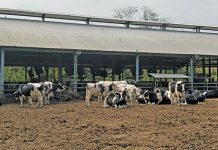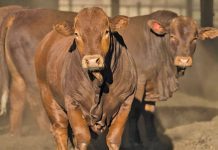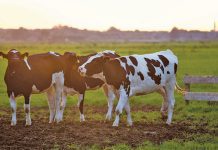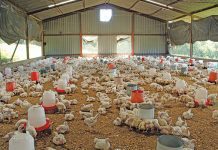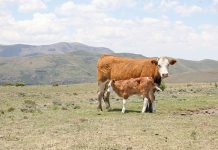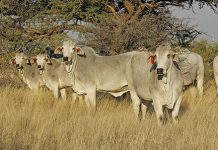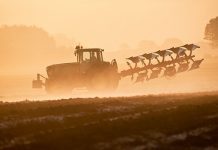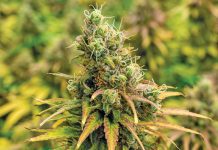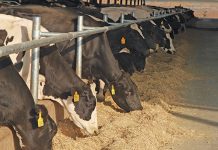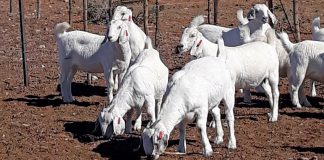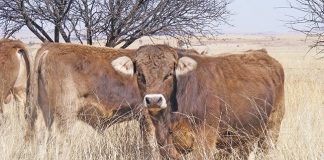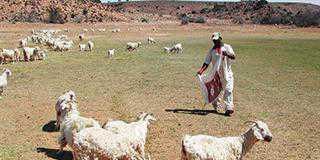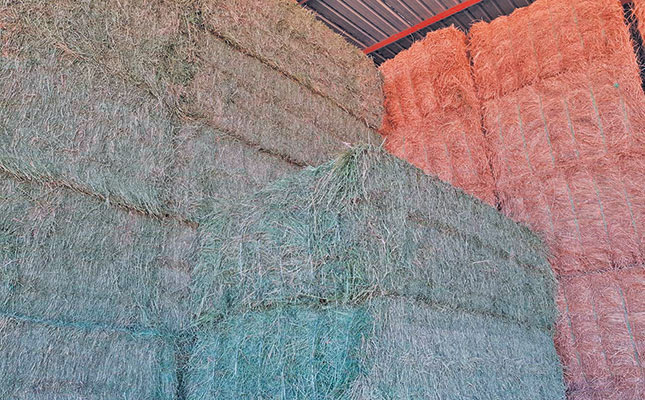
Many producers fail to keep records of their input costs. No matter what scale of farmer you are, you should always look at innovative ways to reduce your input costs, as this leads to better profitability.
Sadly, many communal farmers spend vast amounts of money each year on bales of lucerne or other feed types such as sheep pellets, particularly in the winter months when many communal farming areas suffer grazing shortages.
Consider this: a lucerne bale weighs about 25kg. On average, this can sustain two cows or 10 sheep for one day. If a bale costs R120, this means that two cows cost you R60 each per day to feed, and each of your 10 sheep costs you R12/day. (A cow eats an average of 12,5kg dry matter daily, and five adult sheep should eat what one cow eats in a day.)
If you need to feed cattle in this manner for the five months (150 days) of autumn/winter or until the rain comes, one cow eating R60 worth of feed daily would cost you about R9 000 in one year. (Bagged feed could cost more than this.)
Each sheep would cost you R1 800 over these five months. This is economically unsustainable, and even if you could buy lucerne at R60/bale, it would still translate to excessively high input costs.
Permanent grass pastures
While I understand that many communal farmers don’t have expensive equipment such as tractors and seed planters with which to cultivate crops, many of them hire tractors to assist with tilling home gardens and family-owned croplands.
The idea is to plant a perennial grass such as Smuts finger (Digitaria eriantha) for your livestock to graze. This grass will keep producing for a number of years if properly cared for, meaning it is not overgrazed and you apply kraal manure as a top dressing at the start of the rainy season.
Smuts finger is a drought-tolerant grass that can be grown in poorer soils in regions with an average yearly rainfall of between 300mm and 500mm.
It is a summer-growing grass that becomes dormant during winter in most summer rainfall areas. When properly established (growing densely and forming seed, while reaching a height of 1m or more), Smuts finger can produce anything from 10 000kg to 20 000kg dry matter/ha/year. I have found 14 000kg to be a good average during a fair to good rain season.
My advice is to allow the grass to reach full length/maturity during the initial establishment phase before putting livestock onto the pasture to graze it.
Depending on the amount of rain, the establishment phase can take anything from three to five months.
Establishment may seem slow in the beginning, because the grass appears to emerge in a patchy manner; it then starts to thicken and grow taller.
I have found the best time to plant is at end-October or mid-November in summer rainfall areas, where most communal farming areas are located.
Good preparation needs to be carried out and weeds should be eradicated. It’s best to wait for some rainfall before working the soil or extracting weeds, as this work is much easier when the soil is soft and moist.
Apply as much kraal manure as possible to the surface of the soil (this can even be done throughout winter), as it will be worked into the land when it is ripped or ploughed in anticipation of planting.
Established pastures should not be continuously grazed to very short lengths in summer, as this weakens their root systems and will eventually affect the quantity of feed the pastures are able to produce.
With a lot of mature grass that has good bulk and is full of seed, you can graze the grass during winter, but not right down to ground level; graze the grass to a length of between 8cm and 10cm. Leave the land to rest until summer, when it should start growing again after the first rain and when soil temperatures begin to rise.
All summer long
At this stage, graze the pasture when it has reached 30cm to 40cm in length and before it goes to seed. This will encourage the grass to create more bulk/food. Remember to rest it once again when it drops to a height of 8cm to 10cm, then start the process again.
Repeat throughout summer, then, in early to mid-February, leave it to grow and go to seed.
Don’t graze it again until deep into winter. The seed will fall in winter, and this will result in the growth of more and denser grass plants the following summer.
Shane Brody is involved in an outreach programme aimed at transferring skills to communal farmers.

